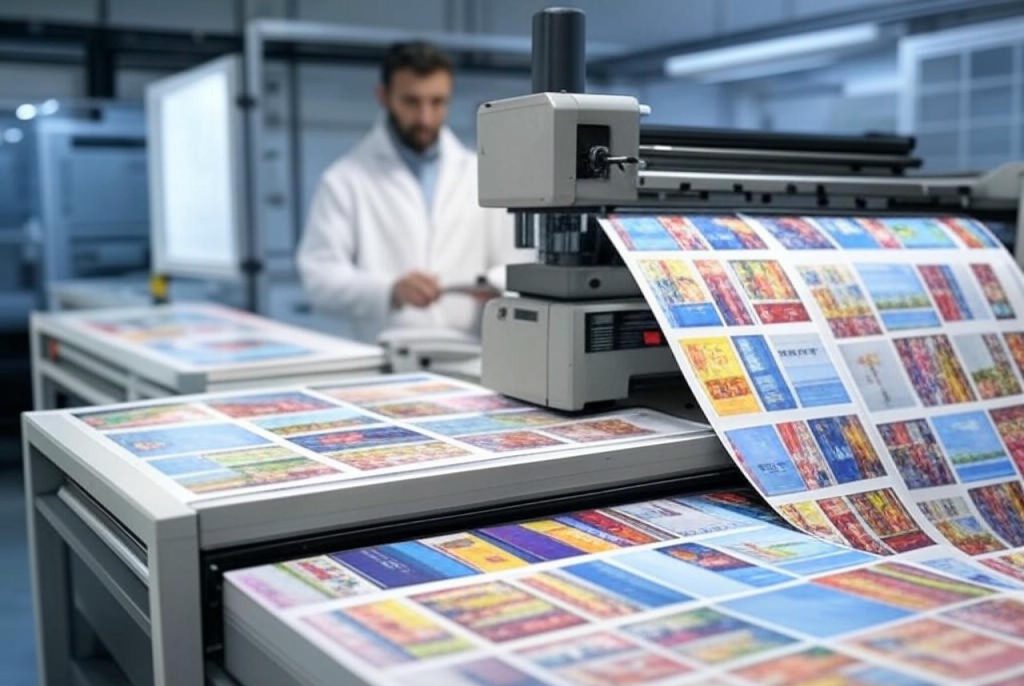
- Digital printing is revolutionizing the packaging industry, shifting from traditional analog processes to vibrant and precise digital methods.
- Jeff Wettersten, a key figure in packaging innovation, will explore digital printing advancements at FuturePrint TECH’s Packaging Day in April.
- Digital printing addresses challenges like waste reduction, efficiency, and supply chain responsiveness, promoting sustainability and meeting brand demands for agility.
- The industry aims to increase digital printing reliance from 1% to 20%, necessitating a paradigm shift alongside technological progress.
- Wettersten’s insights will provide real-world examples and data, offering a blueprint for overcoming obstacles to digital adoption.
- Pioneers like Wettersten and Keypoint Intelligence drive the packaging industry’s evolution, emphasizing the urgency of digital transformation.
The quiet rumblings of a revolution are stirring within the packaging industry, where digital printing is poised to rewrite the rules once dictated by cumbersome analog processes. Picture this: a world where corrugated and folding cartons dance with vibrant hues and intricate designs, brought to life by the precision of digital ink. As this transformation unfolds, experts point to Keypoint Intelligence—a beacon in digital imaging—for spearheading innovation and insight.
Enter Jeff Wettersten, a trailblazer in the packaging arena, who is set to illuminate the path forward at FuturePrint TECH’s Packaging Day this April. Wettersten aims to unravel the complexities of embracing digital print in an area traditionally steeped in manual workflows. With a spirited acumen, he will dissect why, despite its myriad possibilities, digital printing still clings to a niche market presence.
Wettersten’s narrative is not merely about the technicalities of print technology; it’s an exploration of how digital methods can solve existing challenges of waste, efficiency, and supply chain responsiveness. The potential for digital printing extends far beyond simple cost savings. It offers a canvas for converters to boost productivity, cater to brand demands for agility, and promote sustainability—an increasingly pressing concern as global eco-awareness intensifies.
Imagine the industry propelled from a mere 1% reliance on digital solutions to a robust 20% or more. Such a leap requires not just technological advancement but a paradigm shift in the industry’s collective mindset. Brands are increasingly valuing speed and flexibility—qualities that digital printing can provide in spades.
For those hungry for insights, Wettersten’s session promises a feast. Attendees can expect a barrage of real-world examples and meticulously gathered data, painting a vivid picture of both the hurdles and victories on the road to wider adoption of digital solutions. It’s a blueprint for change that’s as much about vision as it is about practicality.
The pulse of innovation beats loudly in the heart of the packaging world thanks to pioneers like Wettersten and organizations such as Keypoint Intelligence. As they chart out the blueprint for this new era, the question morphs from ‘Why digital?’ to ‘How soon can this future be realized?’. For now, the industry watches, waits, and prepares for a new chapter in its storied evolution.
Unlocking the Future of Packaging: How Digital Printing is Transforming an Industry
Understanding the Revolution in Digital Printing for Packaging
The packaging industry is on the brink of a revolutionary shift, driven by the advent of digital printing technology. This transformation is being spearheaded by notable figures and institutions like Jeff Wettersten and Keypoint Intelligence. They are working to illuminate the path forward, focusing on how digital printing can solve existing challenges such as waste, efficiency, and supply chain responsiveness in packaging.
Benefits of Digital Printing in Packaging
1. Customization and Flexibility: Digital printing allows for high customization without the need for lengthy setup times. This is particularly beneficial for brands looking to create personalized packaging for different consumer segments or seasonal offerings.
2. Improved Efficiency: Digital processes reduce the time from design to production, aligning closely with just-in-time production models and reducing the need for large inventories.
3. Sustainability: Given the increasing global focus on environmental responsibility, digital printing minimizes waste compared to traditional methods. This is achieved by reducing the overproduction of materials and enabling the use of eco-friendly inks and substrates.
4. Cost-Effectiveness: While the initial investment in digital printing technology can be substantial, it often leads to cost savings in the long term through reduced waste and inventory costs.
Real-World Use Cases
In the real world, companies like Coca-Cola and Procter & Gamble have experimented with digital printing to create unique, limited-run packaging. These initiatives not only draw customer interest but also highlight the technology’s potential in competitive branding strategies.
Market Forecast and Trends
Current estimates suggest that digital printing accounts for only about 1% of the packaging market. However, experts are optimistic that with increased acceptance and technological advancements, this could rise to 20% or beyond in the coming years. The push towards sustainability and complex supply chain demands are likely to accelerate this shift.
Challenges and Limitations
1. High Initial Costs: The cost of acquiring and setting up digital printing technology can be prohibitive for smaller businesses.
2. Quality Consistency: While digital printing offers many benefits, maintaining color consistency across large print runs can be challenging without sophisticated equipment and expertise.
3. Integration with Existing Systems: Transitioning from analog to digital requires significant changes in workflows, which can be disruptive if not managed effectively.
Actionable Recommendations
– Evaluate Your Needs: Before transitioning to digital printing, assess your packaging needs and the potential benefits to determine if it’s the right fit for your business.
– Start Small: Consider starting with limited-run campaigns to test the technology and gauge its benefits without significant investment.
– Invest in Training: Ensure that your team is well-trained in managing and maintaining digital printing equipment.
– Focus on Sustainability: Leverage digital printing’s eco-friendly aspects as part of your brand’s sustainability messaging.
Conclusion
The digital printing revolution promises to transform the packaging industry, driving improvements in agility, efficiency, and sustainability. Companies eager to stay ahead of the curve should consider integrating digital solutions into their packaging processes to meet the demands of the modern market. By embracing these changes, businesses can not only enhance their brand presence but also contribute to a more sustainable future.
For more insights on digital imaging and innovations in printing, visit Keypoint Intelligence.



